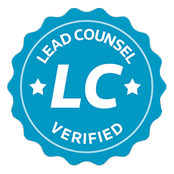With school starting and kids back to classes, it is more important than ever to check on your children’s car seats. Don’t think that a short drive is protection from a potentially harmful accident and allow your kids to break or skip seat care all together. Parents should make sure to protect their children by using the proper car seats that provide additional safety measures for any unforeseen circumstances on the road. However, while we trust this equipment to keep our children protected, there are many instances in which safety equipment fails, requiring a product recall. That is why keeping up with recalls and checking your car seats regularly is a good habit. Register your car seat as soon as you purchase it. You will be notified of any car seat recalls if you register your car seat.
Is there a right seat for your child? The answer is the best car seat is the one that is used correctly. While there are big differences in prices and models for car seats, it’s important to know that all car seats meet the same federal safety standards and crash performance standards. Some car seats and booster seats are easier to use than others, either because they have clearer instructions, are easier to install, have better labels, or make it easier to secure your child correctly in the seat, which can be seen in the wide variety of ease-of-use ratings that car seats get. Make sure children are properly buckled whichever seat is appropriate for their age, weight, and height. As a child grows there are different stage progression of seats that they should use for optimal safety.
All children under 2 must be properly secured in a rear-facing car seat.
For the best possible protection, infants and toddlers should be buckled in a rear-facing car seat, in the back seat, until they reach the maximum weight and height limits of their car seat. Tight is right: Make sure your car seat is installed tightly. If, when holding the car seat at the belt path (where the seat belt or LATCH strap passes through), you can move the seat more than 1 inch, then it is not installed tightly enough.
Use a forward-facing car seat from 2-4 years.
When children outgrow their rear-facing car seats, they should be buckled in a forward-facing car seat, in the back seat, until they reach the upper weight or height limit of their car seat. The car seat must have an internal harness for maximum protection to the child. Check the car seat manual and labels on the car seat for weight and height limits.
Booster Seats should be used at least at 4 years and up to 8 years of age unless they are taller than 4’9’’.
Once children outgrow their forward-facing car seat, they should be buckled in a belt-positioning booster seat, in the back seat, until seat belts fit properly. Seat belts fit properly when the lap belt lays across the upper thighs (not the stomach) and the shoulder belt lays across the chest (not the neck).
Graduating with no car seats.
When and only when a seat belt fits properly without a booster can a child no longer use the booster seat and will only need a seat belt securely fastened for every trip. The belt should lay across the upper thighs (not the stomach) and the shoulder belt lays across the chest (not the neck).
Take the time to correctly get educated on car seat safety. It is important to remember to always replace your car seat after a crash because car seats are supposed to handle only one crash. California law makes it MANDATORY for insurance companies to replace the car seats in an accident. Know the law and your rights.
In case of an unavoidable accident, the Law Offices of Payam Y. Poursalimi can answer any questions or concerns. Call the office for a free consultation at 877-PAYAMLA.














